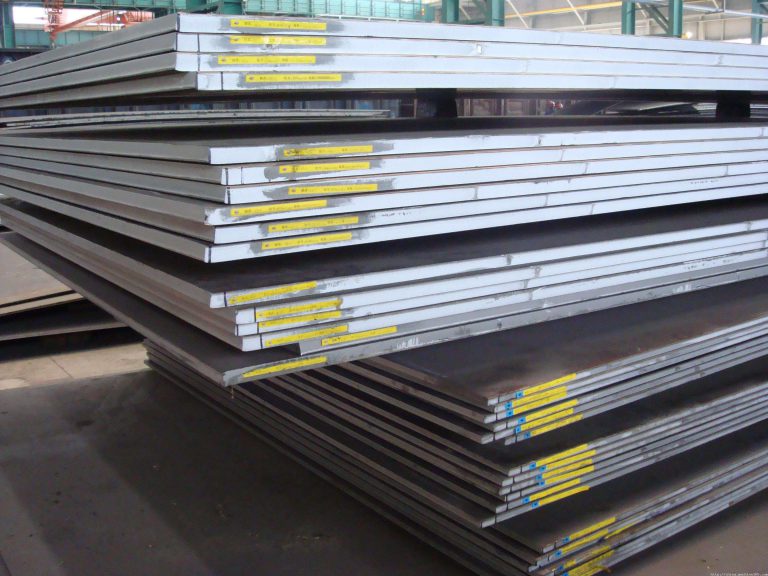asme sa 516 gr 70 carbon steel
SA516Gr.70 is widely used in petroleum, chemical, power station, boiler, and other industries used to make reactors, heat exchangers, separators, spherical tanks, gas tanks, liquefied gas tanks, nuclear reactor pressure shells, boiler drums, liquefied petroleum
Equipment and components such as gas cylinders, high-pressure water pipes of hydropower stations, and turbine volutes.
A516Gr70N meets the requirements of (ASME) ASTMA516/A516M standards, and fully meets the needs of oil gas with a high content of sulfur and hydrogen, reduces sulfur and hydrogen corrosion, reduces equipment maintenance, and increases equipment service life.
The steel plate has the following characteristics: good impact resistance, low-temperature deformation, good welding performance, good fatigue resistance, good anti-layer cracking performance, microalloying, high purity, low carbon equivalent, strong resistance to sulfur and hydrogen,
The products have good dimensional tolerances and surface quality.
We are ASME SA516 Gr.70 and ASME SA516GR.70 steel plate manufacturers,SA516GR.70 stocklist, SA516GR.70 cutting parts, SA 516 GR 70 machined parts supplier. Gangsteel exporter ASME SA516 Grade 70|ASME SA516GR.70 steel plate. SA516GR70 is a carbon pressure vessel steel grade. ASME SA516 GR.70 steel plates stock supplier.Keywords: ASME A516 Grade 70, ASME A516GR.70, ASME A516GR70, ASME A516 GR.70 SA516 Grade 70 steel is a carbon pressure vessel steel grade for moderate and lower temperature service.
SA516 Grade 70 usual request normalized if thickness above 40mm, if not, Gangsteel usual delivery in hot rolled or control rolled station. A516 Gr.70+N or A516gr70N mean that steel grade must be normalized in any thickness.

Applications embody a range of circumstances including plumbing, potable water and wastewater therapy, desalination, and brine therapy. Types 304 and 316 stainless steels are standard materials of construction involved with water. However, with increasing chloride contents, greater alloyed stainless steels corresponding to Type 2205 and tremendous austenitic and tremendous duplex stainless steels are used. The most typical high-temperature gaseous combination is air, of which oxygen is probably the most reactive component.
Which is better ss304 or ss316?
Since Type 316 stainless steel alloy contains molybdenum bearing it has a greater resistance to chemical attack than 304. Type 316 is durable, easy-to-fabricate, clean, weld and finish. It is considerably more resistant to solutions of sulfuric acid, chlorides, bromides, iodides and fatty acids at high temperature.
Today, the oil and fuel trade is the biggest person and has pushed for more corrosion resistant grades, resulting in the development of tremendous duplex and hyper duplex grades. More recently, the cheaper (and slightly much less corrosion-resistant) lean duplex has been developed, mainly for structural applications in building and building and in the water trade. Replacing some carbon in martensitic stainless steels by nitrogen is a recent growth.[when? ] The limited solubility of nitrogen is elevated by the stress electroslag refining process, during which melting is carried out beneath high nitrogen stress. Steel containing as much as 0.4% nitrogen has been achieved, resulting in higher hardness and energy and higher corrosion resistance.
In addition, as iron oxide occupies a larger quantity than the unique metal, this layer expands and tends to flake and fall away, exposing the underlying steel to further attack. This passive movie prevents additional corrosion by blocking oxygen diffusion to the metal floor and thus prevents corrosion from spreading into the majority of the steel.
asme sa516 gr. 70
- Type 304, the commonest grade of stainless steel with 18% chromium, is proof against roughly 870 °C (1,600 °F).
- Resistance to different gases depends on the type of gas, the temperature, and the alloying content of the stainless steel.
- Other gases, similar to sulfur dioxide, hydrogen sulfide, carbon monoxide, chlorine, additionally attack stainless-steel.
- The minimal 10.5% chromium in stainless steels provides resistance to approximately seven hundred °C (1,300 °F), whereas 16% chromium offers resistance up to approximately 1,200 °C (2,200 °F).
- Low carbon steels are categorized by having less than 0.three% carbon by weight.
The tensile strength of SA516Gr70 is 70 kilopounds per square inch, which is more than 482 as everyone usually says.
The main element content is C Mn Si, and the control of p and s determines its performance.
There are very few other trace elements.
Standard Specification for Carbon Steel Plates for Medium and Low-Temperature Pressure Vessels
SA516Gr70 Chemical detail
C≤0.30��Mn��0.79-1.30��P≤0.035��S��≤0.035��Si��0.13-0.45
SA516Gr70 Property Grade U.S (SI), Tensile strength ksi(MPa) 70 (485) and 70-90 (485-620)
Heat treatment
1.·SA515Gr60, SA515Gr70, SA516Gr60, SA516Gr70, SA516Gr60N, SA516Gr70N thickness ≤1.5in, (40mm) steel plate is usually supplied in rolled state, steel plate can also be ordered by normalizing or stress relief, or normalizing plus stress relief.
2. Thickness>1.5in.(40mm) steel plate should be normalized.
3. Unless otherwise specified by the buyer, the thickness ≤ 1.5in, (40mm) steel plate, when notch toughness is required, normalizing should be carried out.
4. If approved by the buyer, it is allowed to use a cooling rate greater than that in the air to improve toughness, but the steel plate only needs to be in the range of 1100-1300°F (595-705°C) subsequently
As PESR is dear, decrease however significant nitrogen contents have been achieved using the usual argon oxygen decarburization process. Austenitic stainless steel is the biggest household of stainless steels, making up about two-thirds of all chrome steel production . They possess an austenitic microstructure, which is a face-centered cubic crystal structure.
The invention of stainless steel followed a series of scientific developments, beginning in 1798 when chromium was first shown to the French Academy by Louis Vauquelin. In the early 1800s, James Stodart, Michael Faraday, and Robert Mallet noticed the resistance of chromium-iron alloys (“chromium steels”) to oxidizing brokers.
Increasing chromium and nickel contents present increased resistance. The properties of duplex stainless steels are achieved with an general decrease alloy content than similar-performing tremendous-austenitic grades, making their use value sa516gr.70 steel supplier-efficient for many applications. The pulp and paper business was one of the first to extensively use duplex stainless steel.
